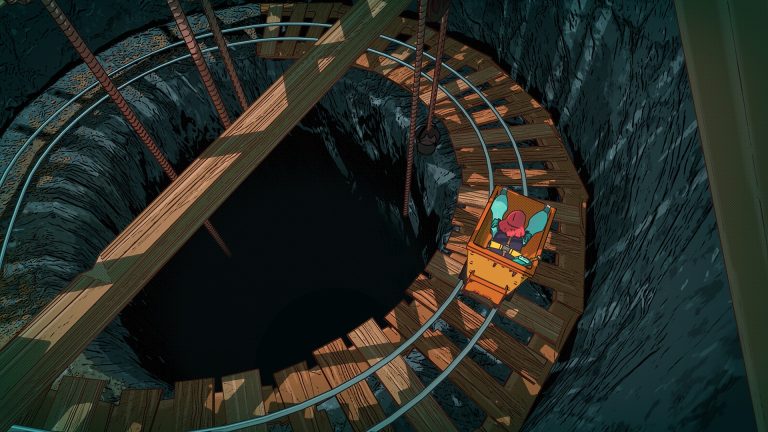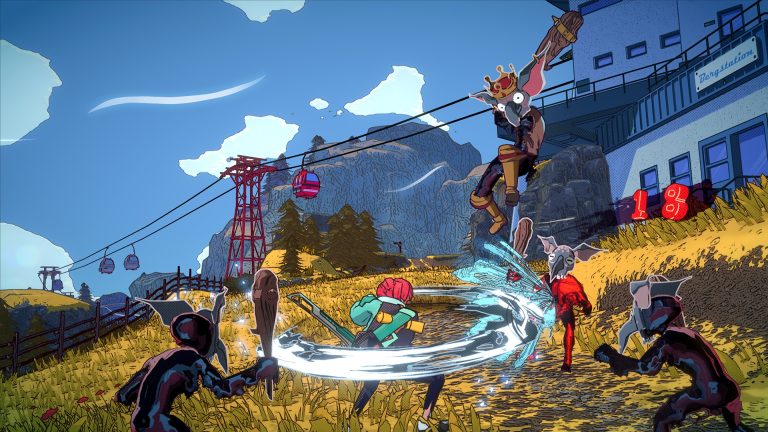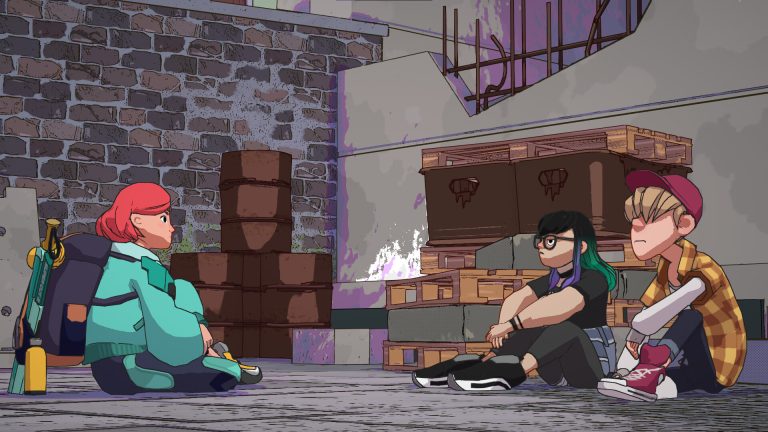Nintendo pushing The Legend of Zelda in a new direction with Breath of the Wild and Tears of the Kingdom was clearly the right call. The issue was that other game developers didn’t step up to fill the void Nintendo left behind. The most dependable action-adventure game series without an M rating had morphed into something different. I was unsure that any games would carry on the tradition of the classic 3D Zeldas. Then Dungeons of Hinterberg came along.
In this action RPG, you play as lawyer-in-training Luisa, who is heading to the quaint mountain village of Hinterberg to escape the stress of the big city. Rather than post up on a beach or chill out in a log cabin, Luisa plans to spend her vacation exploring each of the magic dungeons that recently popped up around the village and slaying the monsters within.
Some of my favorite games of the past few months have mashed up elements of other games, but none have done so as successfully as Dungeons of Hinterberg.
Every day in Hinterberg is split into three intervals: Morning, noon, and evening. Every morning, you pick one of four regions to spend time in. These regions and the dungeons within are where you will spend the bulk of your time. Each region has its own theme, its own group of dungeons, and two unique skills you can only use while you’re there. For instance, in the snowy mountains of Kolmstein, you can summon a magic snowboard to shred the slopes, and in Doberkogel, you can throw a spiked ball on a chain or drop a bomb.
Scattered throughout the small open worlds of each region are entrances to dungeons. Most of the dungeons focus on either puzzles or combat, but there’s usually a healthy mix of both. In all, there were 25 dungeons to conquer, and after completing them, I was ready for 250 more. I was blown away by how clever and compelling each and every dungeon was — filled to the brim with thoughtful puzzles, worthwhile loot, and challenging encounters. The developers sometimes play with perspective and the camera as well, locking the camera in place for a 2D side-scroller effect or an isometric view of the world. One dungeon even takes inspiration from Super Mario Galaxy, filled with small planetoids to traverse.

Typically, puzzles involve making use of that region’s skills. Locking each skill set to a region is a brilliant way to keep from overwhelming the player. You won’t have to remember a laundry list of abilities as you progress deeper into the game, but that doesn’t take away from the satisfaction or the fun of the puzzles and platforming challenges.
Those skills will serve you well when you come up against a group of monsters. The combat in Dungeons of Hinterberg is fairly run-of-the-mill: Luisa has a sword she can use to perform light and heavy attacks, a selection of interchangeable spells called Attack Conduits, and those two skills. She can also dodge roll out of the way.
Battles are always contained in their own little arenas, which I imagine was a technical necessity as well as a design decision. Enemy variety is somewhat limited, but every enemy has a specific moveset. Basic Kobolds are somewhat quick but telegraph their attacks well in advance. The big trolls move slowly, but their charged-up attacks can knock you over. Some enemies dart around at high speeds, some shoot projectiles, and some burrow their heads underground and pop up randomly to smack you. The more you fight, the better you’ll know their patterns, so you’ll be prepared when half a dozen enemy types all attack at once.

I found the combat consistently exhilarating, especially as the difficulty ramped up near the end. I never felt completely outmatched, but the monsters pack a punch if you aren’t prepared. The key is to continue upgrading all your gear at a steady clip as you reach the hardest dungeons. Luisa starts her journey with a dinky sword and crummy armor, but you’ll find much better gear in the overworld, in dungeons, at shops, and from getting to know people better.
Once you finish a dungeon, you’ll head back to the village for the evening, where the social sim elements of the game take over. There are 16 people roaming around Hinterberg you can get to know during the vacation, from influencers and professional slayers to locals and merchants. As you hang out with them, you’ll learn more about their lives, opening up new quests around town. Every time one of your relationships levels up, you receive a perk, which can be an item, money, a permanent stat upgrade, or even new gameplay mechanics. Think of these relationships like the Social Links you form with other students in Persona 3, 4, and 5.

As enjoyable as the game is, the relationships are the beating heart of Dungeons of Hinterberg. Unlike so many other fantasy RPGs, this game is set in our world, and the people of Hinterberg reflect that. There’s a moody young local who despises tourists, a monster slayer wannabe who works two jobs to make ends meet, an obnoxious influencer looking to capitalize on the slaying craze, and an elderly woman who misses the Hinterberg she used to come visit before a bunch of magical doors opened up and unleashed monsters everywhere.
The writing does a magnificent job of bringing this world to life. I was invested in the backstories of every character I met, and even as I was blasting through a deadly dungeon, I couldn’t wait to “get home” to talk to someone new. There’s also the larger conspiracy lurking in the background that unfolds over the course of the game. It’s paced so perfectly that it retains its momentum no matter what pace you play at.
In a year full of surprises, Dungeons of Hinterberg has risen to the peak for me. Without a doubt, this will be in the conversation for Game of the Year this December. Every idea, every mechanic, every part of the world is working in harmony to build a completely cohesive experience that gets better and better until it ends. It’s a near-flawless triumph.
Dungeons of Hinterberg is out now on Xbox Series X/S and PC.








